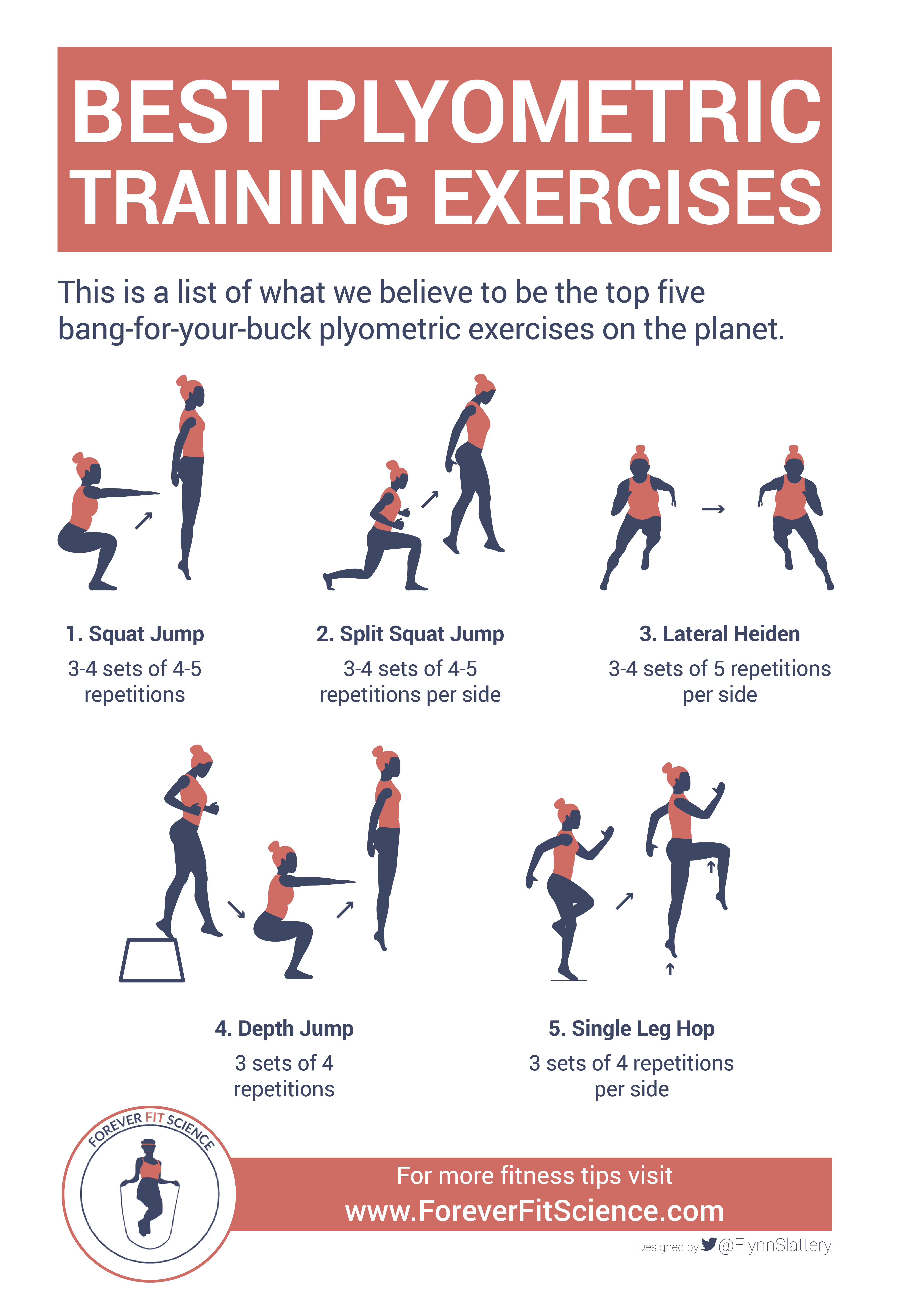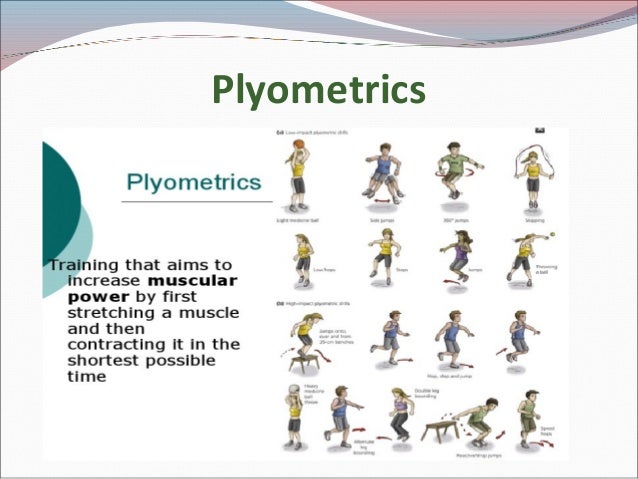Plyometrics ("plyo," for short) used to be called "jump training." It's a technique that you can use in many different ways. For instance, you can do plyometrics to help train for basketball, volleyball, tennis, or any other activity that uses explosive movements.
You'll do a series of jumps and hops, like jump squats or one-leg hops. You might jump up and onto a box or bench, or jump over cones. Some moves will be faster than others.
Every time you land from a jump, your muscles get a stretch. That gives your next jump even more power. The combination of stretching and contracting your muscles whips them into shape.
You won't do plyometrics every day, because your muscles will need a break from all that jumping. If you're not active now, you may need to start working on your basic fitness first and later have a pro show you how to do the moves, so you don't get injured.
It’s a fun alternative to an everyday strength-training workout that boosts your muscle power, strength, balance, and agility. You can either do a workout based around plyometrics, or add some plyo moves to your usual routine without giving it an entire session.
Intensity Level: High
This workout uses maximum power to strengthen your muscles. The moves are quick and explosive, so prepare to use a lot more energy than you do in a typical strength-training session.
Areas It Targets
Core: No. This workout doesn’t specifically target your core.
Arms: No. Most plyometric workouts don't target your arms. But if you want to work them, you can add upper-body moves like medicine-ball throws and plyometric push-ups.
Legs: Yes. Expect your legs to get in great shape from all the jumping and hopping.
Glutes: Yes. Moves like jump squats fire up your glutes to make them stronger.
Back: No. Though the workout involves your whole body, it's not focused on your back muscles.
Type
Flexibility: Yes. This workout is based on a combo of contracting your muscles and stretching them, which is great for flexibility.
Aerobic: No. It’s not considered an aerobic workout, but if you repeat your jumps without pausing, for about 30-60 seconds at a time, your heart rate will go up.
Strength: Yes. This workout is all about boosting your muscle power.
Sport: No.
Low-Impact: No. There’s a lot of high-impact jumping and hopping.
What Else Should I Know?
Cost: Free (Can be done anywhere)
Good for beginners? No. If you’re not in great shape already, choose another workout before taking a stab at this one, which may cause injuries if you’re not used to moves like these.
Outdoors: Yes. It can be fun to bring this workout outdoors. Just be sure to choose a soft surface for landing, like grass.
At home: Yes. Just pull out your gym mat, which is a safer, softer landing pad than a hard floor.
Equipment required? No. You can do this without equipment. Or you can use cones or foam barriers to jump over.


See the class worksheets below: